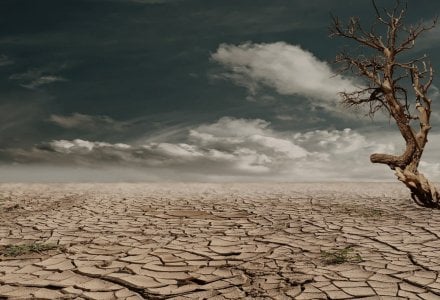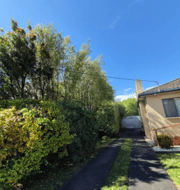Your power bills could skyrocket soon—here’s why
By
- Replies 15
The summertime heat in Australia is no joke. Every year, temperatures continue to rise, breaking records with every passing season.
But on top of that, Aussies may be feeling the heat even more than usual in the coming weeks and months.
Due to an active El Niño, there may be an even higher increase in household power bills compared to the rest of the year.
'With an average 25 per cent increase in energy prices on the east coast in July-August, we can also expect our summer bills to be on average 25 per cent higher than last year,' says Joel Gibson, a money-saving expert.
El Niño is caused by periodic irregularities in the El Niño Southern Oscillation cycle. According to the Bureau of Meteorology, El Niño events are usually associated with 'a weakening, or even reversal' of the normal trade winds that usually blow from east to west across the Pacific Ocean.
Gibson goes on to say that, although wholesale prices are lower, Aussies aren’t expected to feel any downstream relief for quite some time.
‘Wholesale prices are down, which is good news, but this takes six months to a year to flow through to household bills. So keeping a lid on the aircon costs will be crucial this summer.’
What's even worse is that with air conditioning now in 75 per cent of Australian homes, more people need to be aware of how each degree counts.
Fortunately, there are ways to help use air conditioning wisely. If you can, try to dial up your A/C from 20 to 21, as Gibson recommends.
‘(It) can cut your summer cooling bill by 10 per cent over the season, and add up to $100 for some bigger systems,’ he said.
The Queensland government-owned utility, Ergon Energy, has a helpful air conditioner calculator on its website, so you have a general idea of how much each degree can cost you at your household size.
It's also important to consider more affordable energy plans.
‘(St Vincent de Paul Society) says you can save $600-$1200 depending on your state by moving from the most expensive to the cheapest energy plan,’ Gibson said.
Alternatively, if you want to save on power bills in the long-term, it's a good idea to invest in energy-efficient appliances and check up on your home insulation levels as recommended by solar energy provider Smart Energy.
For example, colder air escaping from gaps in your windows and doors can really add up over summer, so it's a good idea to use draft stoppers and even a better one to install a ceiling fan to help keep your place cool without using an aircon.
Now don't get us wrong, air conditioning can be a lifesaver—especially on those hot days—but we're saying that if you want to save a bit of money, remember to take those precautionary steps and stick to basic fan use in moderation.

What do you think of this story? Do you know other ways to combat the El Niño’s climate pattern? Let us know in the comments below!
But on top of that, Aussies may be feeling the heat even more than usual in the coming weeks and months.
Due to an active El Niño, there may be an even higher increase in household power bills compared to the rest of the year.
'With an average 25 per cent increase in energy prices on the east coast in July-August, we can also expect our summer bills to be on average 25 per cent higher than last year,' says Joel Gibson, a money-saving expert.
El Niño is caused by periodic irregularities in the El Niño Southern Oscillation cycle. According to the Bureau of Meteorology, El Niño events are usually associated with 'a weakening, or even reversal' of the normal trade winds that usually blow from east to west across the Pacific Ocean.
Gibson goes on to say that, although wholesale prices are lower, Aussies aren’t expected to feel any downstream relief for quite some time.
‘Wholesale prices are down, which is good news, but this takes six months to a year to flow through to household bills. So keeping a lid on the aircon costs will be crucial this summer.’
What's even worse is that with air conditioning now in 75 per cent of Australian homes, more people need to be aware of how each degree counts.
Fortunately, there are ways to help use air conditioning wisely. If you can, try to dial up your A/C from 20 to 21, as Gibson recommends.
‘(It) can cut your summer cooling bill by 10 per cent over the season, and add up to $100 for some bigger systems,’ he said.
The Queensland government-owned utility, Ergon Energy, has a helpful air conditioner calculator on its website, so you have a general idea of how much each degree can cost you at your household size.
It's also important to consider more affordable energy plans.
‘(St Vincent de Paul Society) says you can save $600-$1200 depending on your state by moving from the most expensive to the cheapest energy plan,’ Gibson said.
Alternatively, if you want to save on power bills in the long-term, it's a good idea to invest in energy-efficient appliances and check up on your home insulation levels as recommended by solar energy provider Smart Energy.
For example, colder air escaping from gaps in your windows and doors can really add up over summer, so it's a good idea to use draft stoppers and even a better one to install a ceiling fan to help keep your place cool without using an aircon.
Now don't get us wrong, air conditioning can be a lifesaver—especially on those hot days—but we're saying that if you want to save a bit of money, remember to take those precautionary steps and stick to basic fan use in moderation.
Key Takeaways
- Summertime temperatures in Australia are expected to break records due to the prevailing El Niño climate pattern, leading to power bills potentially soaring by as much as 25 per cent.
- Money saving expert Joel Gibson advises consumers that it could take six months to a year for the decrease in wholesale electricity prices to reflect on household bills.
- Energy-efficient practices such as adjusting the air conditioner temperature and investing in energy-efficient appliances are recommended to combat the increased costs.
- El Niño is a warming effect caused by irregularities in the El Nino Southern Oscillation cycle, and is usually associated with 'a weakening, or even reversal' of the normal trade winds that usually blow from east to west across the Pacific Ocean.
What do you think of this story? Do you know other ways to combat the El Niño’s climate pattern? Let us know in the comments below!








